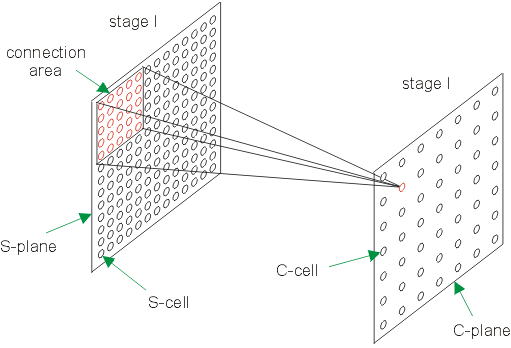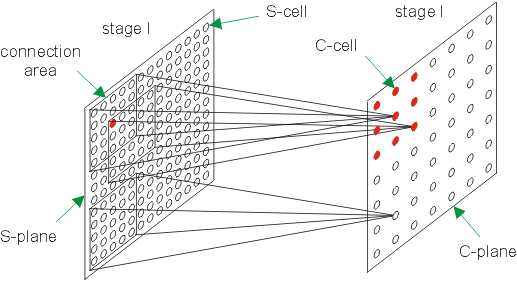 |
| Fig. 11.1 - Connection area of the C-cell |
Each C-cell in the neocognitron evaluates outputs of S-cells from the certain connection area from one of S-planes from previous S-layer. Number of S-planes, however, can be greater in some cases.
Size of connection areas is the same for all C-cells in one C-layer and it is determined at construction of the network. One C-cell connection area of size 5 by 5 cells is shown in figure 11.1.
 |
| Fig. 11.1 - Connection area of the C-cell |
C-cell output value depends on activity of S-cells from connection area. The greater number of active S-cells is or the greater their activities are the greater C-cell output value is. C-cell function is exactly described in mathematical description.
For C-cell to be active it is sufficient that at least one active S-cell is present in its connection area. With regard to overlapping of neighbouring C-cell connection areas activity of one S-cell affects activity of greater number of C-cells. In consequence of that C-plane contains a blurred representation of S-plane content. This is obvious from figure 11.2 as well where one active S-cell and all C-cells influenced by it are marked.
 |
| Fig. 11.2 - C-cell function |
Ability of C-cell to compress content of connection area in the certain way is the next consequence of C-cell function. Hence we can decrease the density of cells in C-layer to the half of density of cells in previous S-layer in some cases.
On the following example we will show the last and probably the most important consequence of C-cell function which is ensuring of the neocognitron's tolerance of feature shifts.